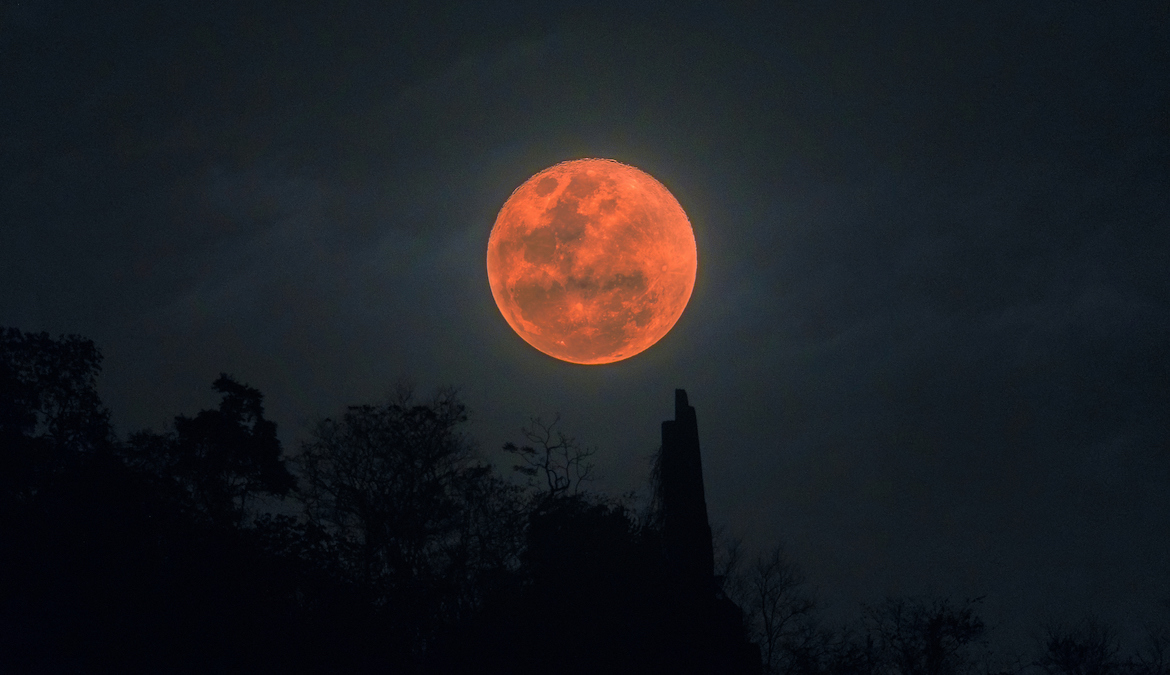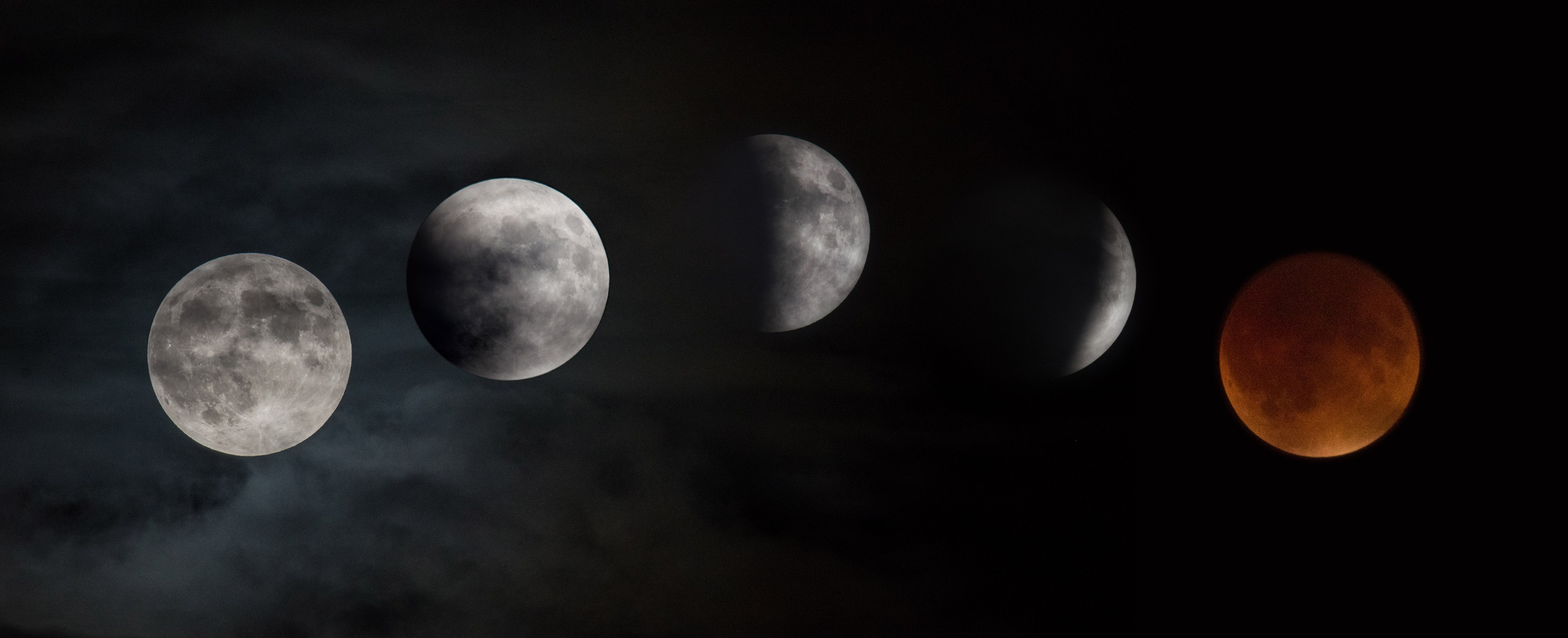Lunar Eclipse
What is a lunar eclipse—and when will the next one happen?
The phenomenon has delighted and terrified humanity through the ages. Learn about the three different types, what causes them, and how ancient cultures interpreted them.

Lunar eclipses happen about twice a year when the sun, Earth, and moon align so the moon falls into our planet’s shadow. There are three kinds of lunar eclipses: total eclipses or “blood moons,” partial, and penumbral.
This year, we’ll see two lunar eclipses—a penumbral lunar eclipse on March 25 and a partial lunar eclipse September 17. The first will be subtle, with the moon passing only into Earth’s outer, fainter shadow, called the penumbra.
Though penumbral eclipses are often not visible to the naked eye, this spring eclipse should be. This is because Earth’s shadow will cover 95 percent of the moon’s surface; only 60 percent is required to see the eclipse with the naked eye.
In September, the effect will be more dramatic as a portion of the moon will pass into the darker part of our planet’s shadow, called the umbra. It might look like a circle was carved out the side of the moon.

This cosmic phenomenon has delighted or terrified humanity throughout recorded history, and astronomers have learned how to track celestial motions to predict when a lunar eclipse will occur years to centuries in advance.
What are penumbral and partial lunar eclipses?
While we typically see one full moon a month, not every month delivers a lunar eclipse. That's because the moon's orbit around Earth is slightly tilted, and it only passes through the planet's cone-shaped shadow at specific times.
That tilt is why each eclipse can be seen at different times and from different places on Earth. However, astronomers have noticed that lunar eclipses follow a long-term pattern called the Saros cycle—and any two eclipses separated by one Saros cycle share similar attributes through time. 
What's more, not every lunar eclipse completely covers the moon's disk. During a partial lunar eclipse, only part of the moon passes through the umbra and the rest of the moon stays illuminated by the sun.
During a penumbral eclipse, all or part of the moon passes through the brighter part of Earth's shadow, and we see very little effect from Earth.
What is a total lunar eclipse or blood moon?
Every so often, the silvery orb of the full moon undergoes a dramatic transformation. Darkness slips across the lunar face, and for a while, the entire moon may be colored a deep blood red.
This is what's known as a total lunar eclipse, when the moon, the sun, and Earth line up in just the right way for the moon to be engulfed in Earth's shadow.
Its peak, called totality, can last for up to an hour and 47 minutes, while the full eclipse can last about six hours from start to finish as the moon slips behind Earth and then emerges on the other side.
During totality, the lunar orb changes color and becomes yellow, ruddy orange, or even a deep crimson, which is why a total lunar eclipse is sometimes called a blood moon. This ominous-looking effect appears because the moon does not generate its own light, and what we normally see as moonlight is really reflected light from the sun.
While most of that sunlight is blocked during a total lunar eclipse, some of it gets bent and scattered as it filters through Earth's atmosphere, so that only longer, redder wavelengths make it through. The exact color we see on the moon depends on how much dust is in Earth's atmosphere, since dust can absorb more of the filtered light and thus deepen the eclipsed moon's hue.
Lunar eclipse myths
For many people today, lunar eclipses are cause for celebration, and many people host eclipse- viewing parties and even travel great distances to see one in person. Others, both in the past and present, believe lunar eclipses are bad omens.
The Inca, for instance, told stories of a jaguar attacking the moon and turning it bloody, while the Mesopotamians believed the moon was being assaulted by demons. And the Batammaliba people in Togo and Benin interpret a lunar eclipse as the sun and moon working through a feud.
Thanks to our understanding of the ongoing dance of orbital dynamics, astronomers are able to calculate when eclipses must have happened in the past. By checking those dates against written accounts, scientists can determine when a total lunar eclipse must have happened during a moment of historical significance.
Enjoy total lunar eclipses while they last: Measurements of the distance between Earth and the moon show that our lunar companion is spiraling away from us at about 3.8 centimeters a year. In a billion years or so, the moon will be too far away to be fully enveloped by Earth's shadow, and blood moons will become the stuff of legend.
Source
https://en.wikipedia.org/wiki/Lunar_eclipse
https://science.nasa.gov/moon/eclipses/
https://www.timeanddate.com/eclipse/total-lunar-eclipse.html
https://www.space.com/33786-lunar-eclipse-guide.html
https://www.beaumontenterprise.com/news/article/march-lunar-eclipse-visibility-18929295.php




































